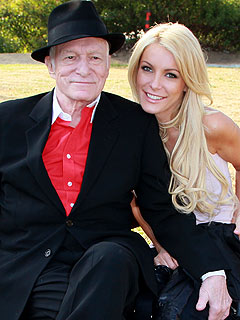NEW YORK — “I was raised into believing that money is everything,” said Maire Mendoza, 19, crying at her own tale.
Her parents are near-invisibles in this city that they’ve heard called a city of dreams. They left Mexico before Maire was born and have toiled anonymously ever since — her mother a baby sitter these days, her father a restaurant worker.
They raised their girls as pragmatic survivors. So it was startling when Maire came to them not long ago with an epiphany: “I now know that I don’t want to work for money,” she said, to bafflement. But her father, sensing his limitations, deferred. “You’re probably right,” she remembers him saying, “and it’s because you go to school and you know things that we don’t know.”
Ms. Mendoza’s self-discovery was no accident. Such discoveries are the goal of an audacious experiment in New York that seeks to improve the fortunes of community college students by demolishing and rebuilding their perceptions about work.
Community colleges are the bedrock of American higher education. They often take all comers — clever teenagers, 25-year-old ex-drifters, middle-aged downsizees in need of retraining — and let them study as needed: a class at a time or a full load, for a degree or for fun. In a nation whose mythology declaims that all who try can make it, community colleges are among the last hopes of proving the mythology true.
But their anything-goes approach has come under fire in recent years, in part because of dismal graduation rates, which can hover in the twenties, teens or even single digits in some cases.
“The job the country needs community colleges to do now (better success) is different from the job needed from them (broader access) when the community college movement began,” said Allan C. Golston, president of the U.S. program of the Bill and Melinda Gates Foundation, which has pressed for major reforms.
Thanks in part to the reformers’ pressure, the New Community College opened here this autumn, with Ms. Mendoza in the inaugural class. It is an experimental institution within the City University of New York, with a mission to take the students whom community colleges usually fail — they’re still taken first-come, first-serve, not by application — and hugely lift their trajectories.
The college pulls on many levers to achieve that goal — requiring students to be full-timers; limiting courses of study to six fields with proven job prospects; offering abundant counseling. But the most intriguing idea may be a mandatory first-year class called “Ethnographies of Work.”
The course grew out of findings that students who attend community colleges — who in New York come overwhelmingly from low-income or minority backgrounds — often harbor negative associations with work, said Nancy Hoffman, an education scholar who has advised the new college. In these students’ communities, work may be primarily experienced as soul-crushing or exploitative or elusive or illegal.
“Mostly in my community, it’s just to survive,” said Jesus A. Paredes, 18, another first-year student at the New Community College. “Nobody really followed their passion. Or if they did follow their passion, it didn’t go right.”
And so, for their ethnography class this autumn, students fanned out across New York to investigate work. They sat in offices and recorded observations (how workers dressed, their mood, how authority was expressed). They interviewed lawyers, social workers, techies. They kept journals about their own attitudes. The purpose was to reach a deeper understanding of what work is (the topic of their final paper), and how — as Ms. Mendoza was seeking to do — to reconcile the impulse to survive with one’s passions.
“Work is something people do and get paid for,” one student wrote in her final paper. “Work is the foundation of purpose,” said another.
For Jeslyn Ruiz, 18, the class gave her the courage to tell her grandmother that, no, she won’t be a nurse; she wants to be a lighting director for concerts. Her grandmother, who came to the United States from Puerto Rico, laughed in her face. “Oh, no, you’ll be a nurse,” she said, not commanding, just mournfully predicting.
Sherine Smith, 21, came to the course with the notion that “I have to make the most money possible” doing the least possible work. Meeting real-life workers had convinced her that money may not leave you better off and was forcing her to reconsider.
Out of nine students who gathered to meet with a reporter, six said they emerged from the class persuaded that job and passion must align. Derek Norman, a 22-year-old musician who wants to join the Fire Department and confine his music to after-hours gigs, spoke for the keep-them-separate camp: “I don’t feel that you need to take the two of them and mend them together.”
Some of the students seemed less sure of their ultimate direction but were still savoring a strange and stirring semester. For Mr. Paredes, a denizen of this most vertical of cities whom fate has kept close to the ground floor, the homework to interview a successful lawyer delivered on a long-deferred dream: “I’ve never been to a 52nd floor,” he said. He quite liked it up there.
Join an online conversation at http://anand.ly; Follow on Twitter.com/anandwrites












